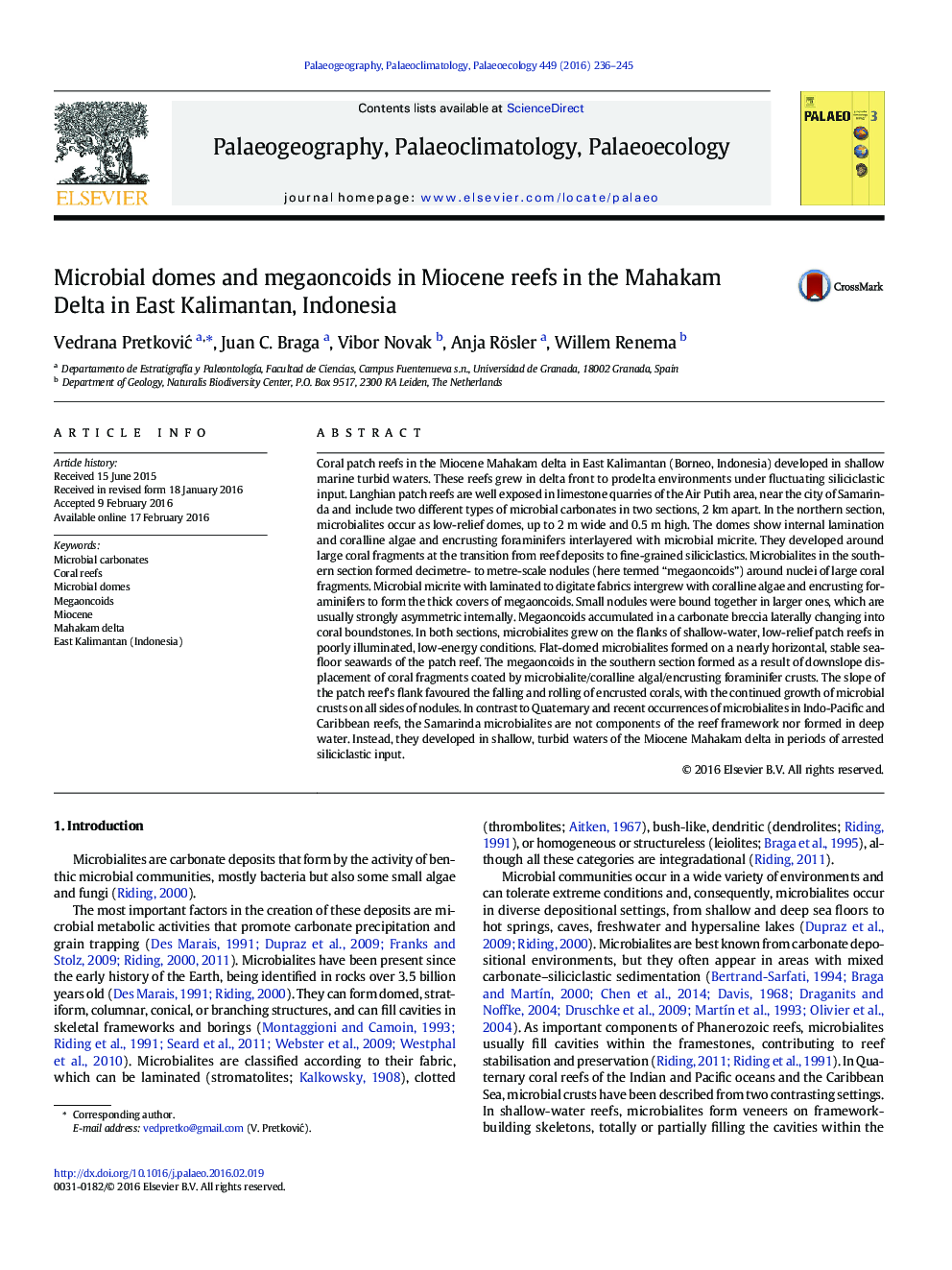| کد مقاله | کد نشریه | سال انتشار | مقاله انگلیسی | نسخه تمام متن |
|---|---|---|---|---|
| 4465763 | 1622142 | 2016 | 10 صفحه PDF | دانلود رایگان |
• Microbialites occur in Langhian patch reefs within delta deposits in East Kalimantan.
• Microbialites appear as low-relief domes and as large nodules, here named megaoncoids.
• Flat-domed microbialites formed at the transition from reefs to fine siliciclastics.
• Megaoncoids accumulated in a breccia laterally changing into coral boundstones.
• Both types formed in shallow, turbid waters of the Miocene Mahakam delta.
Coral patch reefs in the Miocene Mahakam delta in East Kalimantan (Borneo, Indonesia) developed in shallow marine turbid waters. These reefs grew in delta front to prodelta environments under fluctuating siliciclastic input. Langhian patch reefs are well exposed in limestone quarries of the Air Putih area, near the city of Samarinda and include two different types of microbial carbonates in two sections, 2 km apart. In the northern section, microbialites occur as low-relief domes, up to 2 m wide and 0.5 m high. The domes show internal lamination and coralline algae and encrusting foraminifers interlayered with microbial micrite. They developed around large coral fragments at the transition from reef deposits to fine-grained siliciclastics. Microbialites in the southern section formed decimetre- to metre-scale nodules (here termed “megaoncoids”) around nuclei of large coral fragments. Microbial micrite with laminated to digitate fabrics intergrew with coralline algae and encrusting foraminifers to form the thick covers of megaoncoids. Small nodules were bound together in larger ones, which are usually strongly asymmetric internally. Megaoncoids accumulated in a carbonate breccia laterally changing into coral boundstones. In both sections, microbialites grew on the flanks of shallow-water, low-relief patch reefs in poorly illuminated, low-energy conditions. Flat-domed microbialites formed on a nearly horizontal, stable seafloor seawards of the patch reef. The megaoncoids in the southern section formed as a result of downslope displacement of coral fragments coated by microbialite/coralline algal/encrusting foraminifer crusts. The slope of the patch reef's flank favoured the falling and rolling of encrusted corals, with the continued growth of microbial crusts on all sides of nodules. In contrast to Quaternary and recent occurrences of microbialites in Indo-Pacific and Caribbean reefs, the Samarinda microbialites are not components of the reef framework nor formed in deep water. Instead, they developed in shallow, turbid waters of the Miocene Mahakam delta in periods of arrested siliciclastic input.
Journal: Palaeogeography, Palaeoclimatology, Palaeoecology - Volume 449, 1 May 2016, Pages 236–245
